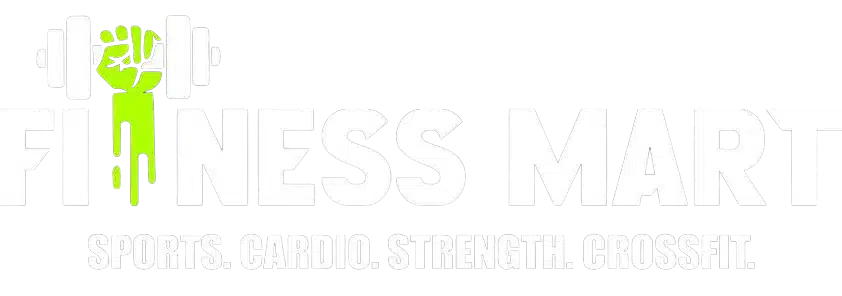No products in the cart.
32 Best Dumbbell Exercises for Building Muscle Leave a comment
Dumbbells are essential in any strength training routine and are known for their effectiveness and versatility. They allow for a wide range of exercises that can target every major muscle group in the body, making them perfect for anyone looking to enhance their muscle strength and overall fitness. This guide will walk you through 32 of the best dumbbell exercises to help you build muscle efficiently.
Benefits of Dumbbell Exercises
Versatility
Dumbbells can be used for numerous exercises that target almost every part of the body, from your legs and back to your chest and arms, allowing for a comprehensive workout regime.
Convenience
Their compact size makes dumbbells ideal for home gyms, as they require less space compared to larger gym equipment and are easy to store.
Range of Motion
Dumbbells allow a more excellent range of motion than barbells, which helps to enhance the effectiveness of the exercises and promotes better joint health.
Symmetry and Balance
Dumbbells ensure that both sides of the bodywork equally hard, preventing muscle imbalances and promoting better overall body symmetry.
Upper Body Dumbbell Exercises
Flat Bench Press
Lie on a bench with a dumbbell in each hand and your feet flat on the floor. Push the dumbbells up so that your arms are directly over your shoulders and then lower back down after a short pause.
Incline Bench Press
Set a bench to an incline of about 30 degrees. Repeat the process of the flat bench press. This variation targets the upper chest.
Dumbbell Flyes
Lie on a bench with dumbbells in each hand and arms extended above your chest. Keeping your elbows slightly bent, lower the dumbbells to the sides of your body until your chest is comfortably stretched.
Single-Arm Row
Place one knee on a bench, lean forward until your back is flat, and pull a dumbbell with your free hand in a rowing motion towards your hip.
Bent Over Row
Bend your knees slightly and bend forward at the waist. Hold the dumbbells in each hand and row them towards your stomach.
Renegade Row
Get into a plank position with a dumbbell in each hand. Row one dumbbell up while stabilizing your body with the other arm, then switch sides.
Shoulder Press
Sit or stand with your back straight and push the dumbbells from your shoulders upwards above your head.
Lateral Raises
Stand with your feet hip-width apart, and lift the dumbbells out to your sides until they are at shoulder height.
Front Raises
Similar to lateral raises, but lift the dumbbells in front of you. This targets the front of your shoulders.
Arnold Press
Start with dumbbells held in front of your shoulders, palms facing you. As you press the dumbbells overhead, rotate your wrists so that your palms face forward at the top of the movement.
Bicep Curls
Stand holding a dumbbell in each hand with your arms hanging by your sides. Curl the weights as you keep your palms facing forward.
Hammer Curls
Similar to bicep curls, but with your palms facing each other, emphasizing the brachialis part of the arm.
Tricep Kickbacks
Lean forward slightly, holding a dumbbell in one hand. Extend your arm back until it is straight, then return to the start position.
Overhead Tricep Extensions
Hold a dumbbell with both hands behind your head. Extend your arms to raise the dumbbell above your head, then lower it back after a pause.
Lower Body Dumbbell Exercises
Squats
Stand with feet shoulder-width apart and dumbbells held by your sides or on your shoulders. Bend your knees and lower into a squat, then return to the start.
Lunges
Step forward with one leg and lower your hips until both knees are bent at about a 90-degree angle. Push back up and repeat on the other side.
Step-Ups
Step onto a bench or platform with one leg and push through your heel to lift your body. Step down and repeat on the other side.
Deadlifts
Stand with feet hip-width apart and dumbbells in front of your thighs. Bend at your hips and knees, lower the dumbbells to the ground, then return to standing.
Hip Thrusts
Sit on the ground with a bench behind you. Roll a dumbbell onto your hips and lean back against the bench so that your shoulder blades are near the top of it. Drive through your feet, extending your hips vertically.
Glute Bridge
Lie on your back with knees bent, feet flat on the floor, and a dumbbell resting on your hips. Lift your hips to create a straight line from your knees to your shoulders.
Bulgarian Split Squats
Stand a couple of paces away from a bench, and place one foot on it behind you. Squat down by flexing the knee and hip of your front leg until the knee of your rear leg is almost in contact with the floor.
Core and Stability Exercises
Russian Twists
Sit on the floor with your knees bent and feet off the ground. Hold a dumbbell with both hands, lean back slightly, and rotate the dumbbell to your left and right hips rapidly.
Weighted Sit-ups
Lie on the ground with your knees bent and hold a dumbbell on your chest. Perform a sit-up by lifting your upper body all the way up to your knees.
Dumbbell Side Bend
Stand holding a dumbbell in one hand and lean to the side, then return to the start position. Repeat on the other side.
Standing Oblique Crunch
Stand with a dumbbell in one hand. Crunch your side by bringing your elbow down to your hip, return to the start, and repeat on the other side.
Full-Body Dumbbell Workouts
Dumbbell Clean and Press
Begin with dumbbells on the floor and squat down to grab them. In one smooth motion, lift them to your shoulders and then overhead.
Thrusters
Hold the dumbbells at your shoulders, squat down, and as you stand up, press the dumbbells above your head.
Farmer’s Walk
Grab a pair of heavy dumbbells, stand up straight, and walk a certain distance or until you can hold the dumbbells no longer.
Dumbbell Swing
Hold a dumbbell with both hands and swing it between your legs and up to eye level in a smooth arc.
Incorporating these 32 dumbbell exercises into your routine will help you effectively build muscle across your entire body. Remember to maintain proper form and gradually increase the weight as you progress to continue challenging your muscles and avoid plateaus. With consistency and dedication, dumbbells can be your most valuable tool in achieving a stronger, more muscular physique.
Frequently Asked Questions
Q1: How often should I perform these dumbbell exercises to see muscle growth?
For optimal muscle growth, aim to perform strength training exercises 3 to 4 times a week, allowing at least one day of rest between sessions to give your muscles time to recover and grow.
Q2: What size dumbbells should I use for these exercises?
The size of the dumbbells you should use depends on your current strength level and the specific exercise. Start with a weight that allows you to complete 8-12 repetitions with good form but is challenging enough that the last few reps are difficult. As you gain strength, increase the weight to continue challenging your muscles.
Q3: Can dumbbell exercises alone be effective for building muscle, or should I incorporate other types of workouts?
Dumbbell exercises can be highly effective for building muscle on their own. However, for comprehensive fitness, it’s beneficial to incorporate a variety of training types, including cardio, flexibility exercises, and other forms of strength training to ensure overall health and prevent imbalances.
Q4: What are some common mistakes to avoid when doing dumbbell exercises?
Common mistakes include using weights that are too heavy, leading to poor form; rushing through repetitions, which reduces muscle engagement; and neglecting to warm up, which increases the risk of injury. Focus on maintaining controlled, steady movements and proper form throughout each exercise.
Q5: How long will it take to see results from doing these dumbbell exercises?
The time it takes to see results from dumbbell exercises varies depending on your fitness level, how consistently you train, your diet, and your overall lifestyle. Generally, you may start to see noticeable improvements in muscle tone and strength within 4 to 6 weeks of regular, consistent workouts.
Q6: Should I do all 32 exercises in one workout?
It’s not necessary or advisable to perform all 32 exercises in a single session. Instead, select a variety of exercises that target different muscle groups and incorporate them into your workout schedule over the week. This approach helps prevent overtraining and ensures adequate recovery.
Q7: Are there any specific dietary recommendations to follow while performing these dumbbell exercises?
To support muscle growth, ensure your diet is rich in protein, which is essential for muscle repair and growth. Also, maintain a balanced diet with sufficient carbohydrates for energy and healthy fats for recovery. Staying hydrated and getting enough calories to fuel your workouts are also crucial.
Q8: Can I perform these dumbbell exercises if I have a previous injury?
If you have a history of injuries, it’s important to consult with a healthcare provider or a physical therapist before starting any new workout regimen. They can recommend modifications to ensure that you can perform exercises safely or suggest alternative exercises that won’t exacerbate your injury.



























